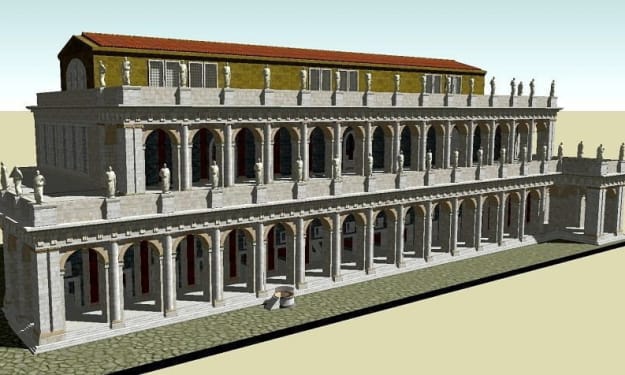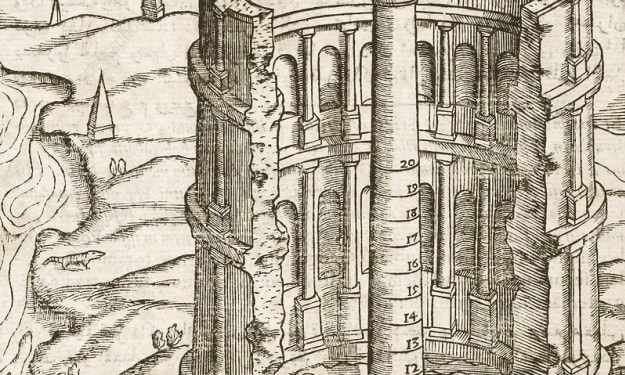
In Agra, India, lies a remarkable example of Mughal architecture, internationally renowned as the Taj Mahal. This resplendent mausoleum, spanning an impressive 42 acres, stands as the embodiment of beauty. However, beneath its awe-inspiring facade, it carries a poignant tale. This 400-year-old structure once reigned as the grandest and most magnificent edifice of its era. Today, it proudly holds the esteemed title of the seventh wonder of the world. Its construction demanded the unwavering dedication of 20,000 laborers, who toiled relentlessly for an uninterrupted span of 22 years. If we were to assess its value in the present day, this tomb adorned with exquisite marble would be estimated at a staggering $1 billion or more than Rs 7.5 crore. The Mughal architects, through their remarkable craftsmanship, have left behind indelible marks of their extraordinary talents. The Taj Mahal holds secrets that were hidden 400 years ago. In 1607, during the rule of the Mughal Empire, the youngest son of the emperor, Shahab-ud-din Muhammad Khurram, turned 15. To celebrate, a grand party was held at the Agra Fort. Khurram, the emperor's favorite, was always adorned with diamonds and gold on his birthdays. But on this particular birthday, something extraordinary happened. The emperor arranged for Khurram to marry the daughter of one of his lawyers, Mumtaz Mahal. Little did anyone know that their love story would become legendary. Over the next decade, Khurram, now known as Shah Jahan, won many battles and earned the title of Emperor of the World.
Shah Jahan cherished Mumtaz above all his six wives, which is why he spent the majority of his time with Mumtaz Mahal. As time flew by, in 1621, the Mughal emperor passed away. Shah Jahan, who was renowned in the Mughal Empire and the favored son of the Emperor, ascended the throne seven years later, in 1628. The entire Mughal Empire was delighted with their new emperor. Shah Jahan made all the decisions, while Mumtaz Mahal provided suggestions behind the scenes. However, no one anticipated that this joyous period would soon turn into mourning. Just a year after taking the throne, the Mughal Empire found itself in a state of war. The war persisted for the next two years, with Shah Jahan emerging victorious once again. But before he could revel in his triumph, he received devastating news. While giving birth to their 14th child, Mumtaz Mahal fell ill and passed away on June 17, 1631. The entire Mughal Empire was plunged into grief. This news struck Shah Jahan like a bolt of lightning, completely shattering his world. His first love and most beloved wife, Mumtaz Mahal, was gone.
For the next eight days, he refrained from eating anything. Over the next two years, he also abstained from listening to music or using any perfume. Mumtaj Mahal had one final wish before her death - to have her grave placed inside the most beautiful tomb in the world. To fulfill this wish, Shah Jahan dedicated his entire life and wealth. Six months after Mumtaj Mahal's passing, construction on the Taj Mahal began. Approximately 20,000 laborers, sculptors, and craftsmen were brought from across the empire. Upon Shah Jahan's orders, armies of men were brought to Agra. The construction site, located on the bank of the Yamuna River where Mumtaj Mahal's grave lay, presented a significant challenge due to the soft land. Excavation posed a risk to the foundation of the Taj Mahal, as the flow of water could potentially harm the structure. To address this issue, Mughal engineers initiated the excavation of numerous wells. The laborers tirelessly dug until they reached dry soil. These wells were then filled with rocks and debris, and towering stone columns were erected over them. To accomplish this task, an army of elephants was employed alongside the laborers. This clever strategy by the Mughal engineers proved successful, resulting in a solid foundation on the soft land. With the foundation complete, it was now time to create a building unlike any other. A design that would surpass all previous records. Shah Jahan drew inspiration from his ancestors' tombs when envisioning the design of the Taj Mahal. The concept of the pillars was borrowed from his father's tomb, while the core of the building was influenced by his grandfather's tomb. The idea for the dome was derived from his uncle's tomb. When all these elements were combined, a breathtaking design emerged. To construct the building, millions of bricks were baked on-site. This was an arduous task that required a significant amount of funds. Each passing day, the royal treasury grew emptier. However, Shah Jahan remained undeterred, solely focused on completing this grand endeavor. It is said that during the construction of the Taj Mahal, countless individuals were brought in to contribute to its creation.
Shah Jahan ensured that the food supplies in the surrounding areas were sufficient by bringing them to Agra. Once the main structure of the building was completed after years of hard work, it was time to adorn it with marble. The marble was sourced from Rajasthan, which is known for producing some of the finest marbles in the world. Shah Jahan had specifically reserved the Makrana marble for the Taj Mahal, ensuring that the demand for the monument was met before anyone else could purchase it. Thousands of tonnes of marble were transported from Rajasthan to Agra with the help of numerous elephants. The dome of the Taj Mahal is so massive that its grandeur can be felt just by looking at it. 400 years ago, they only had stones to build a 40m high dome.
The Taj Mahal's finishing touches were completed with the exquisite art of Pietra Dura. Pietra Dura refers to the process of embedding precious stones into marble, carefully cutting and shaping the marble to fit the unique contours of each stone. Using glue, the stones are then securely attached to the marble. One remarkable feature of the Taj Mahal is its ever-changing colors throughout the day. Before sunrise, it casts a beautiful black shadow. As the sun rises, it takes on a soft yellow and pink hue. And in the afternoon, it dazzles with its brilliant white appearance.
The construction of the Taj Mahal was completed in 1654, after 22 years of hard work. It was a magnificent tomb built by Shah Jahan in honor of his beloved wife, Mumtaj Mahal. The name of this beautiful building was inspired by her name. Every year, on Mumtaj Mahal's death anniversary, Shah Jahan would visit the Taj Mahal by traveling through the Yamuna River. The entrance to the Taj Mahal was exclusively for the Royal family members. However, four years later in 1658, Shah Jahan's son overthrew the throne and became the emperor of the Mughal Empire. Shah Jahan was then imprisoned in the Agra fort. Despite being a prisoner, he was allowed to see the Taj Mahal through a window. After eight years of imprisonment, at the age of 74, Shah Jahan passed away. He was buried alongside Mumtaj Mahal inside the Taj Mahal, where they could finally be together.
About the Creator
Agha Sabir
Embark on an unforgettable journey through worlds of wonder and mystery.
Enjoyed the story? Support the Creator.
Subscribe for free to receive all their stories in your feed. You could also pledge your support or give them a one-off tip, letting them know you appreciate their work.






Comments
There are no comments for this story
Be the first to respond and start the conversation.